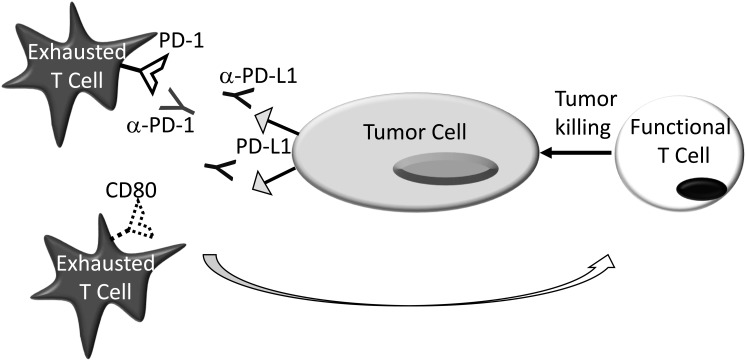Figure 2.
PD‐1:PD‐L1 Blockade. PD‐L1— expressed either on the tumor cell surface or on cells within the tumor microenvironment—binding to PD‐1 and/or CD80 on the surface of tumor reactive effector T cells, renders them dysfunctional. Blockade of these interactions with α–PD‐1 or α–PD‐L1 mAbs, protects these cells and facilitates their anti‐tumor activity. While α–PD‐1 and α–PD‐L1 mAbs are often considered to be analogous, α–PD‐L1 mAbs block the interactions between PD‐L1 and PD‐1/CD80 while α–PD‐1 mAbs inhibit PD‐1 engagement of both PD‐L1 and PD‐L2 (Not Shown). Both α–PD‐1 and α–PD‐L1 mAbs are further differentiated by the ability of their aggregated Fc fragments to activate complement and mediate ADCC/ADCP.

